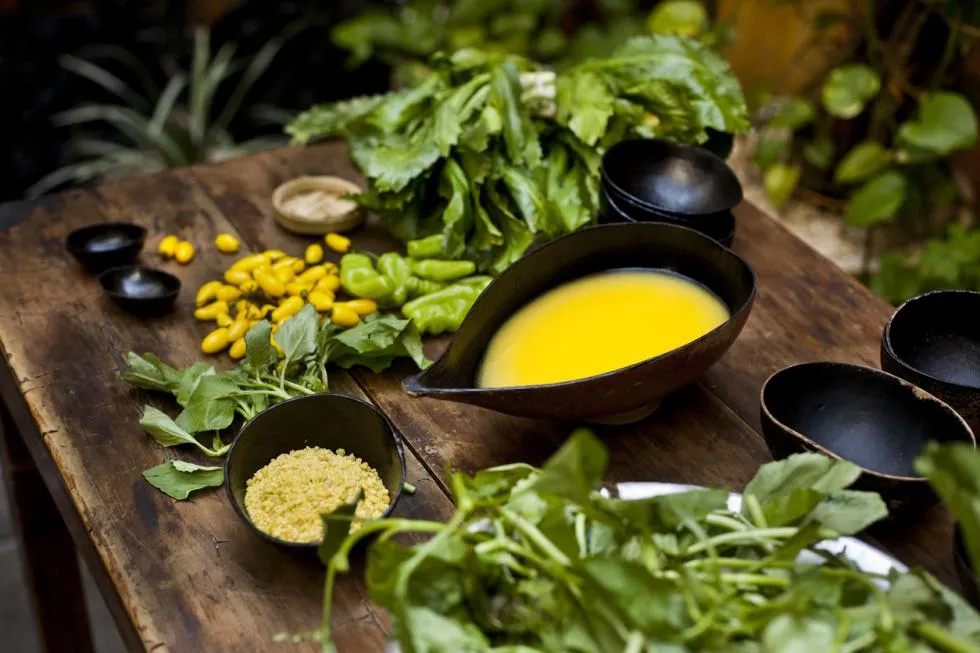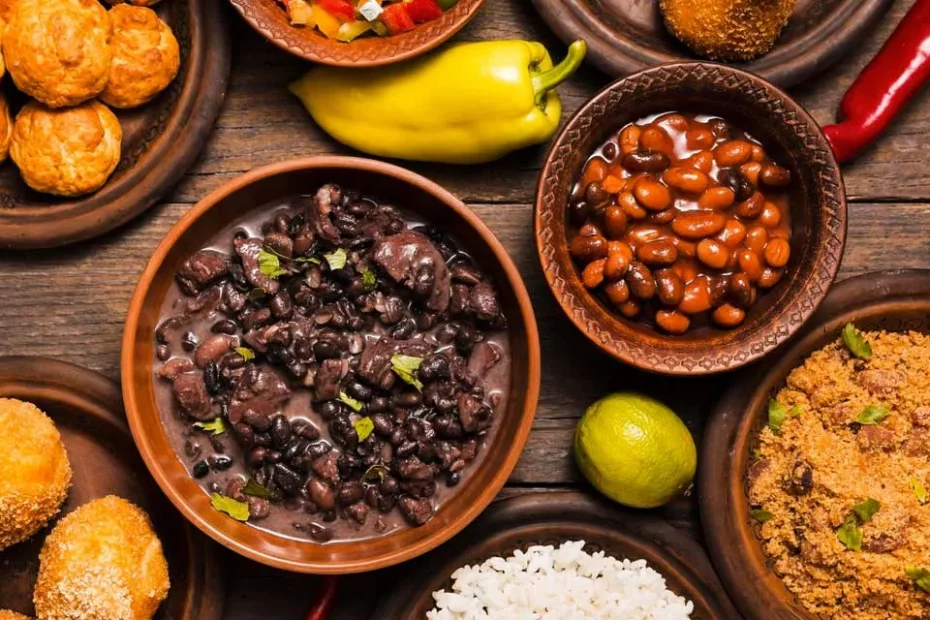In an increasingly interconnected world, cuisine emerges as one of the most vibrant and tangible expressions of cultural diversity.
Adverts
A deep immersion into the universe of ingredients reveals not only the vast range of flavors and textures, but also the rich cultural fabric that unites distant communities.
In this review, we'll explore the intriguing interconnection between ingredients and cultures, delving into the roots of flavors that have transcended borders and shaped the global palate.
The Globalization of Ingredients: A Culinary Phenomenon
The 21st century has seen rapid globalization in ingredient exchange, an evolution that has transformed cooking in remarkable ways.
Ancient Asian spices like turmeric and black pepper have become mainstays of European cuisines, while traditional African foods like chickpeas have gained prominence on Asian and American tables.
This exchange of ingredients is not merely a culinary smorgasbord, but rather a testament to our growing appreciation for the richness of global gastronomic traditions.
Cultures, once separated by vast oceans, now share ingredients that not only please the palate, but also tell ancient stories of migration, trade and innovation.
Ingredients as Vehicles of Cultural Identity
Ingredients, more than simple culinary elements, are vehicles of cultural identity. Take rice as an example, a grain that transcends continents and permeates tables from Asia to Latin America.
In Japan, rice is the basis of sushi, while in India, it is the star of biryani. In Latin America, it becomes paella in Spain and arroz con pollo in Puerto Rico.
This diversity of uses reveals the ingredients' ability to adapt and absorb the nuances of each culture.
Rice is a link that transcends borders, but its essence is shaped by the skillful hands of cooks who masterfully transform it into dishes that reflect the uniqueness of their cultures.
Emblematic Ingredients: Guardians of Centennial Traditions
Some ingredients, true guardians of centuries-old traditions, remain as witnesses of the past. Saffron, for example, with its origins in the Mediterranean region, is a golden thread that runs through history, adding aroma and color to dishes since ancient times.
The olive, a symbol of the Mediterranean diet, transcends its geographic roots, becoming a constant presence in the world's kitchens.
These iconic ingredients not only offer unique flavors, but also connect generations, allowing gastronomic traditions to last through time.
Culinary Innovation: The Fusion of Ingredients and Cultures
While food traditions remain the foundation, culinary innovation emerges at the intersection of different cultures and ingredients.
The fusion of flavors becomes a form of artistic expression, where daring chefs employ techniques and ingredients from diverse origins to create unique gastronomic experiences.
Fusion gastronomy transcends barriers, challenging traditional limits and providing diners with a sensorial journey.
Dishes that combine Asian and European ingredients, like foie gras sushi, are testaments to the human ability to transcend cultural boundaries, creating something new and exciting in the process.
The Culinary Dance of Ethnicities: A Celebration of Diversity
The richness of the cuisine transcends borders, delving deeply into the ethnic traditions that shape the tastes of different communities.
India's lush spices, such as cumin and cardamom, dance in the curries, revealing the complexity of flavors that have defined Indian cuisine for centuries.
Similarly, Thai cuisine is a symphony of sweet, spicy and sour, where lemongrass and Thai pepper play central roles, transforming dishes into unique sensory experiences.
On the African continent, ethnic diversity is echoed in cuisine, where Ethiopian injera, a sour, spongy bread, coexists with South African bobotie, a meat pie flavored with spices. Each ingredient, carefully chosen, tells the story of a people and their culinary traditions.
The Millennial Asian Legacy in Ingredients
Asia, home to some of the world's oldest civilizations, offers a fascinating tapestry of ingredients that have transcended borders.
Rice, cultivated meticulously over millennia, is the epicenter of Asian traditions, but its transformation into sushi in Japan, congee in China or biryani in India highlights the diversity and adaptability of this culinary gem.
The use of ginger in Chinese, Indian and Japanese cuisine highlights its versatility, while nori seaweed, once exclusive to Japanese cuisine, finds its way into innovative dishes around the world.
This diffusion of Asian ingredients not only enriches the global gastronomic experience, but also pays homage to the complexity of cultures that echo through the centuries.
The Meeting of Flavors in Latin America
In Latin America, a mosaic of indigenous, European and African ethnicities weaves a vibrant culinary legacy. Corn, originating in pre-Columbian civilizations, is made into tortillas in Mexico, arepas in Colombia and a variety of dishes throughout the region.
Peppers, which found fertile soil in Latin American lands, dance in spicy sauces, while indigenous heirloom cassava becomes the basis of beloved dishes like Brazilian tapioca.
Latin American cuisine is a testament to the meeting of different ethnicities, a fusion of traditions that results in a vibrant celebration of flavors.
The African influence is manifested in Brazilian feijoada, the European in Argentine empanadas, creating a culinary palette that reflects the richness of cultural diversity.
Constant Evolution: Ingredients as Agents of Culinary Change
As societies evolve, cuisine transforms too, driven by innovation and curiosity.
Ingredients previously confined to specific regions now travel freely, becoming catalysts for culinary change.
Quinoa, once a well-kept secret of the Andes, is now a common fixture in global pantries, celebrated for its nutritional properties and versatility.
The globalization of ingredients not only diversifies the menu, but also challenges traditional notions of authenticity.
Californian sushi, incorporating avocado and other local ingredients, is an example of how dishes can evolve and adapt to new contexts without losing their original essence.
Conclusion: An Ode to the Marriage of Flavors and Stories
As we explore the intricate relationship between ingredients and cultures, it becomes clear that cooking is more than a mere sensory experience. It is a journey through history, a celebration of diversity and a living expression of the connections between distant peoples.

The ingredients, from common to exotic, are the protagonists of this global story, bringing with them not only irresistible flavors, but also memories of distant lands.
In each dish, in each mouthful, we are transported through time and space, united by the magical bond that is global cuisine.




